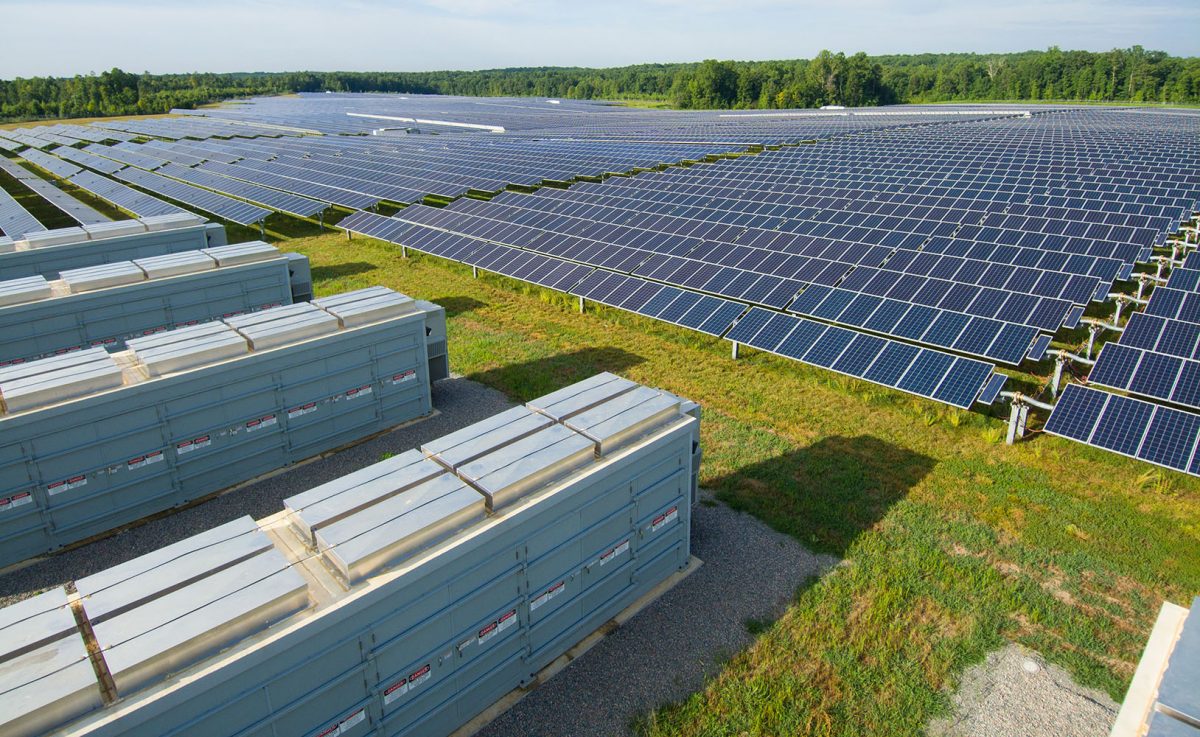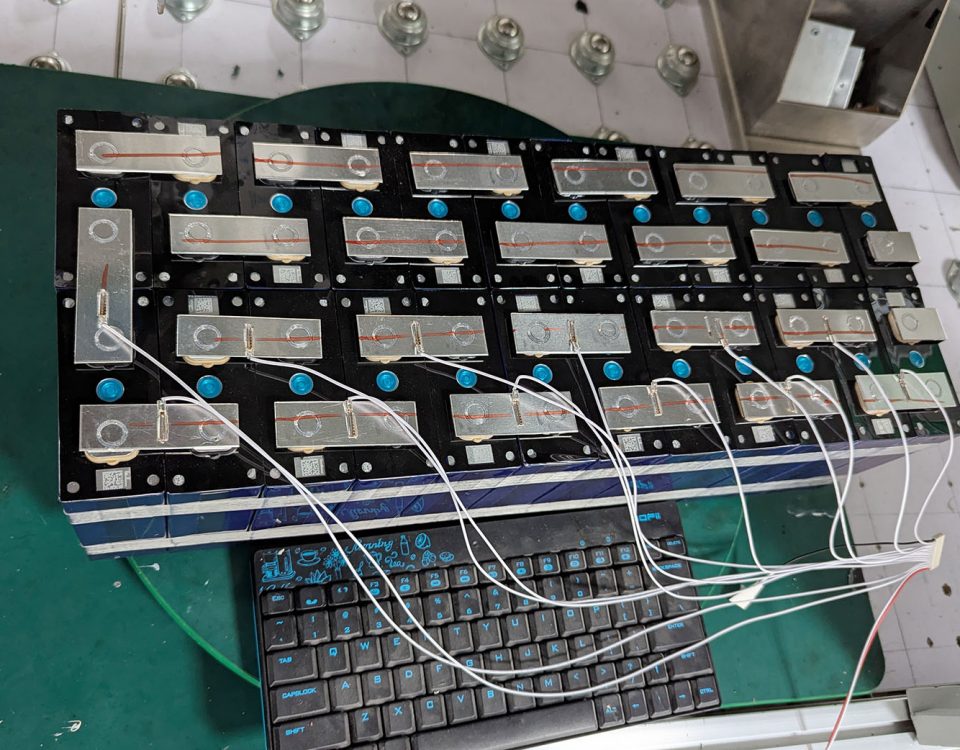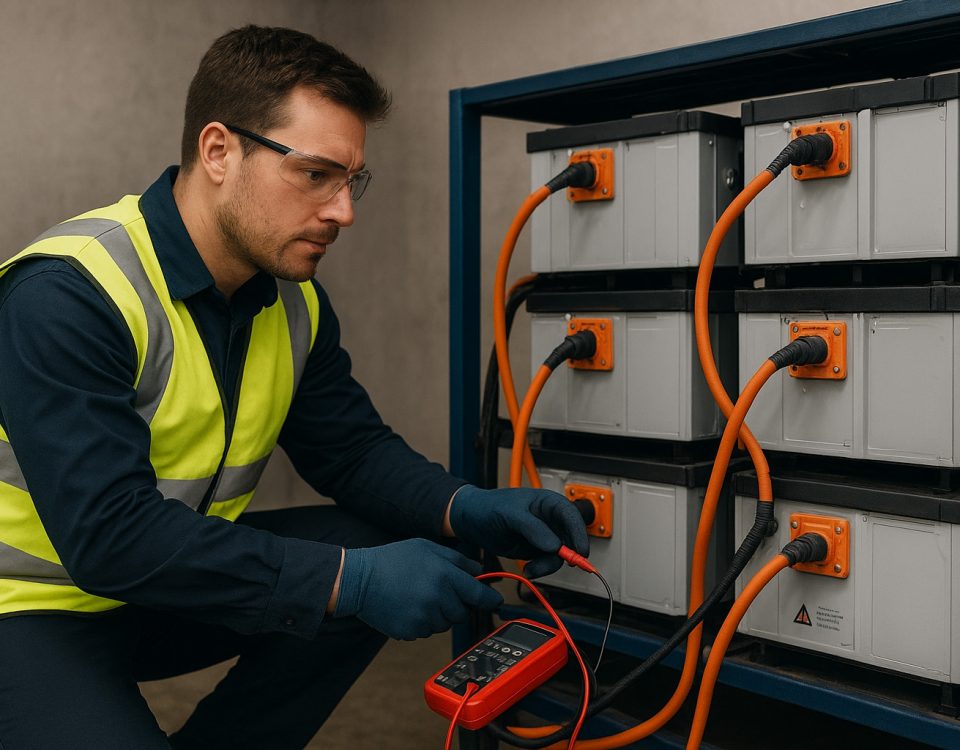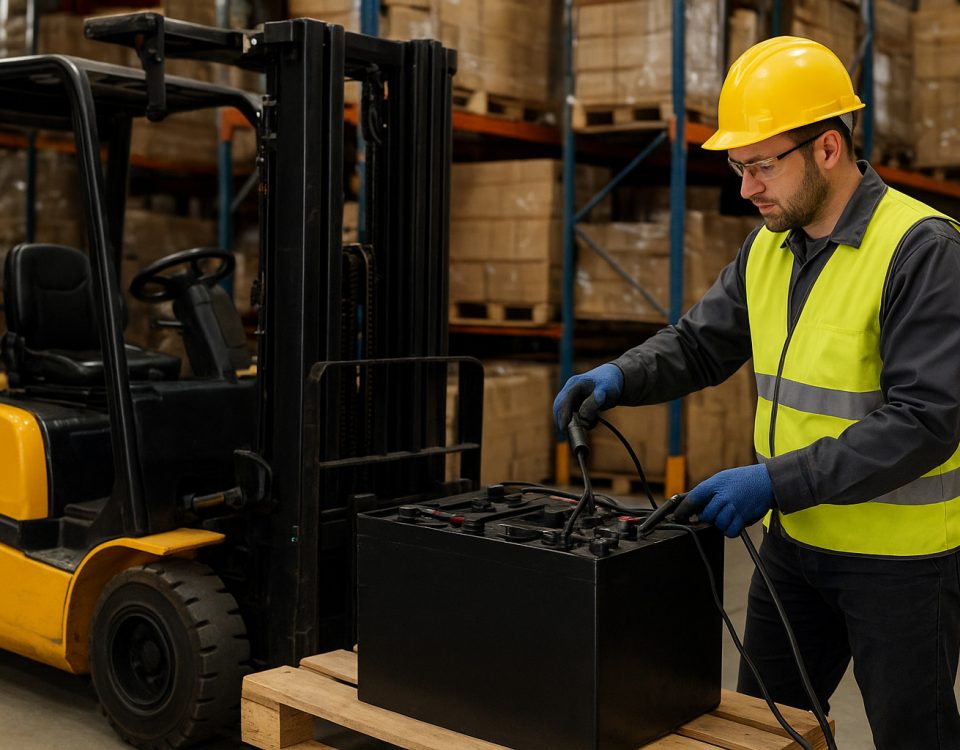Praktische Einblicke in die Aufrüstung auf RICHYE-Lithiumeisenphosphat für zuverlässige Solarenergiesysteme
Bei privaten und gewerblichen Solarenergieanlagen kann die Wahl der richtigen Batteriechemie über die langfristige Leistung und Kosteneffizienz entscheiden. Lithium-Eisen-Phosphat-Batterien (LiFePO4) sind als Alternative zu herkömmlichen Blei-Säure- oder anderen Lithium-Ionen-Batterien immer beliebter geworden. Ihr Sicherheitsprofil, ihre verlängerte Lebensdauer und ihre stabile Leistung locken viele Installateure und Hausbesitzer an, die ein Upgrade in Erwägung ziehen. Doch die Herausforderungen in der Praxis - Anfangsinvestitionen, Integration in bestehende Anlagen, Temperaturverhalten und Wartungspraktiken - erfordern eine sorgfältige Analyse. Dieser Artikel befasst sich mit den konkreten Vor- und Nachteilen eines Austauschs Solarspeicherbatterien mit LiFePO4, wobei er praktische Anleitungen aus der Praxis einfließen lässt und aufzeigt, wie die professionellen Lösungen von RICHYE allgemeine Probleme lösen.
Die Langlebigkeit ist ein wichtiger Grund für die Verwendung von LiFePO4 für Solarspeicher. Gut konzipierte LiFePO4-Module erreichen in der Regel Tausende von Zyklen bei moderater Entladetiefe, oft zwischen 3.000 und 5.000 Zyklen, wenn sie innerhalb der empfohlenen Parameter verwendet werden. Im Gegensatz dazu halten geflutete oder versiegelte Blei-Säure-Batterien unter Tiefentladungsbedingungen in der Regel nur einige hundert Zyklen. Für Solaranwendungen, bei denen tägliche Zyklen die Norm sind, bedeutet diese längere Lebensdauer weniger Austauschvorgänge während der Lebensdauer eines Systems, was die Arbeits- und Entsorgungskosten reduziert. In der Praxis kann ein Hausbesitzer, der Blei-Säure-Batterien nach fünf Jahren austauscht, feststellen, dass LiFePO4-Batterien auch nach einem Jahrzehnt noch gesund sind, vorausgesetzt, das Lade- und Temperaturmanagement entspricht den besten Praktiken.
Auch Sicherheitsaspekte sprechen für die LiFePO4-Chemie. Ihr stabiles Kathodenmaterial widersteht einem thermischen Durchgehen und ist im Vergleich zu Lithiumchemikalien auf Nickelbasis weniger anfällig für Verbrennungen. Im Zusammenhang mit Solarspeichern, bei denen die Batterien in Innenräumen, Garagen oder geschlossenen Schränken installiert werden können, ist die Minimierung des Brandrisikos von entscheidender Bedeutung. Installateure berichten, dass sie bei Installationen, bei denen die Belüftung eingeschränkt sein kann, eher LiFePO4 wählen. Dennoch ist keine Batterie völlig risikofrei; ein integriertes Batteriemanagementsystem (BMS) bleibt unerlässlich. Seriöse LiFePO4-Module verfügen über eine Überwachung der Zellenspannung, einen Überladungs- und Überentladungsschutz sowie Temperatursensoren. Bei der Aufrüstung älterer Systeme ist es wichtig, dass das BMS der neuen LiFePO4-Bank auf den Wechselrichter oder Laderegler abgestimmt ist.
Effizienzgewinne unterstützen die Einführung von LiFePO4 weiter. Der Round-Trip-Wirkungsgrad - die abgegebene Energie im Vergleich zur aufgenommenen Energie - übersteigt bei moderaten Strömen oft 95%, während Blei-Säure-Batterien mit 80-85% arbeiten können. Bei Solaranlagen bedeutet ein höherer Wirkungsgrad, dass ein größerer Teil der geernteten Photovoltaik-Energie für Lasten oder den Netzexport zur Verfügung steht. Über Monate und Jahre hinweg kann dieses Wirkungsgraddelta die Energieverschwendung erheblich reduzieren. Wenn bei bewölktem Himmel oder kürzerem Tageslicht aus jedem Ladezyklus ein Maximum an nutzbarer Energie herausgeholt wird, verbessert dies die Autonomie und verringert die Abhängigkeit von Notstromaggregaten oder Netzbezug.
Das Temperaturverhalten verdient besondere Aufmerksamkeit. LiFePO4 zeigt in gemäßigtem Klima gute Leistungen und behält seine Kapazität über einen breiten Temperaturbereich bei. Das Laden bei niedrigen Umgebungstemperaturen (unter dem Gefrierpunkt) kann jedoch das Risiko einer Lithiumplattierung bergen, was die Lebensdauer des Zyklus beeinträchtigen könnte. Viele LiFePO4-Module verfügen über einen Tieftemperaturschutz, der das Aufladen verhindert, bis die internen Zelltemperaturen über einen sicheren Schwellenwert steigen. Bei Installationen in unklimatisierten Räumen, die kalten Wintern ausgesetzt sind, kann es erforderlich sein, die Batteriegehäuse zu isolieren oder eine leichte Heizung vorzusehen. Umgekehrt beschleunigen anhaltend hohe Temperaturen die Alterung; die Unterbringung der Module in schattigen oder temperaturkontrollierten Bereichen hilft, die Kapazität langfristig zu erhalten.
Trotz dieser Stärken stellen die Anschaffungskosten für viele ein erhebliches Hindernis dar. LiFePO4-Module haben in der Regel einen höheren Anschaffungspreis pro Kilowattstunde als entsprechende Blei-Säure-Module. Für budgetbewusste Projekte kann diese Investition entmutigend erscheinen. Berechnungen der Gesamtbetriebskosten zeigen jedoch oft, dass LiFePO4 aufgrund der längeren Lebensdauer, des geringeren Wartungsaufwands und der höheren nutzbaren Kapazität über die gesamte Lebensdauer des Systems kosteneffektiv ist. Es ist wichtig, die langfristigen Ausgaben zu modellieren, indem man die Häufigkeit des Austauschs, die Einsparungen bei der Effizienz und die potenzielle Leistungsverschlechterung älterer chemischer Systeme bei tiefen Zyklen berücksichtigt. In einigen Nachrüstungsszenarien können gestaffelte Upgrades - der Austausch nur von Teilen einer großen Bank oder das vorübergehende Mischen von Chemikalien - Budgetbeschränkungen überbrücken, auch wenn bei der Anpassung der Leistungsmerkmale Vorsicht geboten ist.
Auch Überlegungen zur Energiedichte beeinflussen die Systemauslegung. LiFePO4 hat eine geringere gravimetrische und volumetrische Energiedichte im Vergleich zu einigen anderen Lithiumchemikalien. Bei Aufdachanlagen oder Anlagen mit begrenztem Platzangebot kann die etwas größere Grundfläche der LiFePO4-Module eine Planung erforderlich machen. Solarspeicher werden jedoch in der Regel in Garagen, Kellern oder speziellen Gehäusen untergebracht, wo der Platzbedarf gering ist. In netzunabhängigen kleinen Häusern oder mobilen Anwendungen spielen Abmessungen und Gewicht eine größere Rolle; die Auswahl von Modulen in der richtigen Größe und die Optimierung des Gehäuselayouts können diese Probleme lösen. Bei Nachrüstungen ist darauf zu achten, dass der verfügbare Platz und die Belüftung der Größe und dem Kühlbedarf der LiFePO4-Bank entsprechen.
Beim Ersetzen vorhandener Batteriebänke ergeben sich Herausforderungen bei der Integration. Viele Wechselrichter und Solarladeregler unterstützen mehrere chemische Systeme, müssen aber neu konfiguriert werden: Anpassung der Ladespannungssollwerte, Erhaltungsparameter und BMS-Kommunikationsprotokolle. Installateure müssen die Kompatibilität überprüfen und manchmal die Firmware aktualisieren oder externe Batteriemonitore hinzufügen, um Ladezustands- und Temperaturdaten zu übermitteln. Einigen älteren Wechselrichtern fehlen LiFePO4-Profile, so dass externe DC-DC-Wandler oder spezielle LiFePO4-kompatible Ladegeräte erforderlich sind. Die Planung des Upgrades umfasst die Kartierung der elektrischen Verbindungen, die Sicherstellung der richtigen Kabeldimensionierung zur Bewältigung der Ladeströme und die Installation der erforderlichen Sicherungen und Trennschalter, die den LiFePO4-Sicherheitsrichtlinien entsprechen. Das Ignorieren dieser Integrationsdetails kann zu einer suboptimalen Leistung oder sogar zu Batterieschäden führen.
Die Wartungs- und Überwachungspraktiken unterscheiden sich von den Blei-Säure-Routinen. LiFePO4 erfordert kein regelmäßiges Ausgleichsladen oder Auffüllen mit Wasser. Stattdessen sind gelegentliche Firmware-Updates des BMS (sofern unterstützt), regelmäßige Inspektionen der Anschlüsse und die Überwachung des Kapazitätsabfalls durch Entladetests die Norm. Die Implementierung eines Überwachungs-Dashboards, das die Anzahl der Zyklen, den Ladezustand und die Temperaturtrends verfolgt, hilft dabei, entstehende Probleme frühzeitig zu erkennen. Bei größeren Solaranlagen werden die Betreiber durch Fernüberwachung über vernetzte BMS- oder Wechselrichterplattformen auf Ungleichgewichte der Zellen oder Temperaturschwankungen aufmerksam gemacht. Hausbesitzer können sich durch einfache Smartphone-Benachrichtigungen über Ladeverriegelungen bei niedrigen Temperaturen oder ungewöhnlich hohe Spannungen darauf verlassen, dass das System sicher funktioniert.
Umweltfaktoren und die Handhabung am Ende des Lebenszyklus verdienen Aufmerksamkeit. LiFePO4 enthält kein Kobalt, was die mit dem Abbau verbundenen ethischen und ökologischen Bedenken verringert. Die Recycling-Infrastruktur für Lithiumbatterien entwickelt sich ständig weiter; die Zusammenarbeit mit zertifizierten Recyclern gewährleistet eine verantwortungsvolle Entsorgung am Ende des Lebenszyklus. Planen Sie bei der Aufrüstung die Entfernung und das Recycling der alten Blei-Säure-Batterien ein und berücksichtigen Sie das LiFePO4-Recycling im Projektbudget. RICHYE legt großen Wert auf nachhaltige Praktiken, indem es Module für eine einfachere Demontage entwickelt und Anleitungen für ordnungsgemäße End-of-Life-Prozesse bereitstellt.
In der Praxis ist zu beachten, dass das anfängliche Verhalten von den Erwartungen abweichen kann, die man bei Blei-Säure-Systemen hat. LiFePO4 hat zum Beispiel eine flachere Spannungskurve während der Entladung, so dass Ladezustandsmessungen, die nur auf der Spannung basieren, irreführend sein können. Die Installation eines Coulomb-zählenden Batteriemonitors, der die zu- und abfließenden Amperestunden verfolgt, führt zu genaueren SoC-Schätzungen. Andernfalls könnte der Benutzer die verbleibende Kapazität falsch einschätzen. Darüber hinaus können LiFePO4-BMS den Ladevorgang bei niedrigen Temperaturen unterbrechen, so dass die Benutzer verwirrt sind, wenn sich das System an kalten Morgen weigert, Photovoltaik-Energie zu akzeptieren. Eine klare Beschilderung der Benutzeroberflächen und die Aufklärung der Endnutzer über diese Merkmale verhindern Verwirrung.
RICHYE Unternehmen Einführung: RICHYE ist ein professionelles Lithiumbatterie Hersteller, der sich auf hochwertige, leistungsstarke und sichere Energiespeicherlösungen zu wettbewerbsfähigen Preisen spezialisiert hat. Durch strenge Qualitätskontrolle, fortschrittliche Zellauswahl und integrierte intelligente BMS-Technologie bietet RICHYE gleichbleibende Kapazität, robuste Zykluslebensdauer und verbesserte Sicherheit. Bei der Aufrüstung von Solarspeichern vereinfachen RICHYE-Module die Integration, indem sie präzise Spannungsprofile, Temperatursicherungen und eine klare Dokumentation für Wechselrichter- oder Ladereglereinstellungen bieten. Ihr Engagement für Zuverlässigkeit und Benutzerführung gewährleistet, dass Installateure und Endverbraucher zuverlässige Solarenergiesysteme erhalten.
Wenn ein LiFePO4-Ersatz in Erwägung gezogen wird, sollten die Projektplaner eine detaillierte Standortbewertung durchführen: Bewerten Sie die Energieverbrauchsmuster, die verfügbare photovoltaische Erzeugung, die Temperaturbedingungen, den Platz im Gehäuse und das Budget. Eine vergleichende Analyse der Gesamtbetriebskosten von Blei-Säure- und LiFePO4-Anlagen hilft, die Investition zu rechtfertigen. Beauftragen Sie qualifizierte Installateure, die sich mit den Feinheiten von LiFePO4 auskennen - Konfiguration von Ladereglern, Validierung der BMS-Kommunikation und Dimensionierung von Verkabelung und Schutzvorrichtungen. Führen Sie bei bestehenden Systemen, falls erforderlich, schrittweise Aufrüstungen durch und überwachen Sie die Leistung nach jedem Schritt, bevor Sie weiter expandieren.
Bei neuen Solaranlagen bietet der Einsatz von LiFePO4 von Anfang an eine optimierte Konstruktion: Auswahl von Wechselrichtern mit nativer LiFePO4-Unterstützung, Dimensionierung der Batteriebänke für die gewünschte Autonomie bei der empfohlenen Entladetiefe (oft 80-90%) und Planung der Gehäuse unter Berücksichtigung der Temperaturkontrolle. Die Integration von Fernüberwachungsschnittstellen bei der Installation vereinfacht die langfristige Überwachung, so dass die Eigentümer den Zustand der Batterien über Jahre hinweg verfolgen können. Schulungsmaterial oder kurze Benutzerschulungen zum Ladeverhalten, zur Interpretation des SoC und zu saisonalen Anpassungen (z. B. Begrenzung der Tiefentladung im Winter, um die Langlebigkeit zu erhalten) optimieren die Ergebnisse weiter.
Trotz höherer Anschaffungskosten bieten die langfristigen Vorteile von LiFePO4 - Langlebigkeit, Effizienz und Sicherheit - im Zusammenhang mit Solarspeichern oft einen höheren Wert. Installationen in der Praxis berichten von weniger Serviceeinsätzen, einer vorhersehbaren Leistung unter verschiedenen klimatischen Bedingungen und einer reibungsloseren Integration mit Hybrid-Wechselrichtern oder Microgrid-Konfigurationen. In kalten Klimazonen oder bei beengten Platzverhältnissen bleiben Herausforderungen bestehen, aber mit geeigneten Wärmemanagementstrategien und modularer Planung lassen sich diese Hürden überwinden. Mit der zunehmenden Reife der Solarindustrie entwickelt sich LiFePO4 zu einer ausgereiften Chemie, die sich in der Praxis bewährt hat, vor allem wenn sie von renommierten Herstellern wie RICHYE unterstützt wird, die umfassenden Support bieten.
Zusammenfassend lässt sich sagen, dass der Ersatz herkömmlicher Batteriebänke durch die LiFePO4-Technologie für die Speicherung von Solarenergie spürbare Vorteile in Bezug auf Lebensdauer, Sicherheit, Effizienz und Umweltprofil mit sich bringt. Die Vorlaufkosten und die Komplexität der Integration erfordern eine sorgfältige Planung, aber eine gründliche Bewertung und die Zusammenarbeit mit erfahrenen Fachleuten führen zu zuverlässigen, langlebigen Systemen. Durch das Verständnis der LiFePO4-Eigenschaften - flache Spannungsentladung, Temperaturempfindlichkeit, BMS-Verhalten - und die Auswahl hochwertiger Module von vertrauenswürdigen Anbietern wie RICHYEMit LiFePO4 können Solaranwender eine robuste Energiespeicherung erreichen, die den sich wandelnden Anforderungen gerecht wird. Ein durchdachtes Design, eine präzise Inbetriebnahme und eine fortlaufende Überwachung stellen sicher, dass sich das Versprechen von LiFePO4 über Jahre hinweg in der Praxis bewährt.




